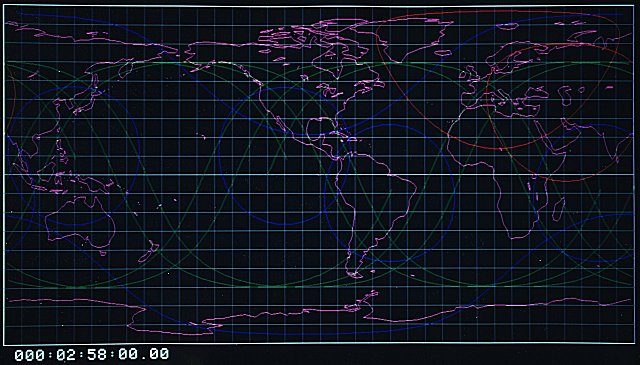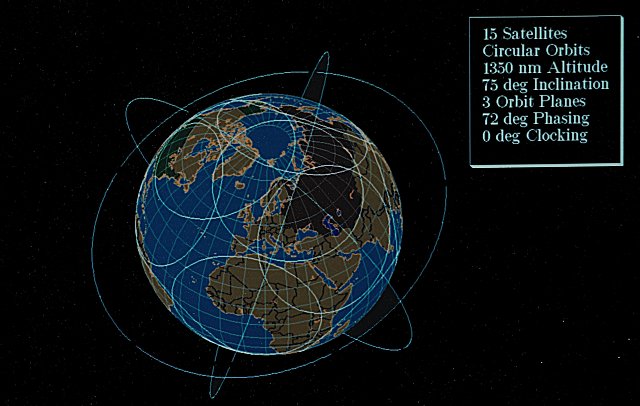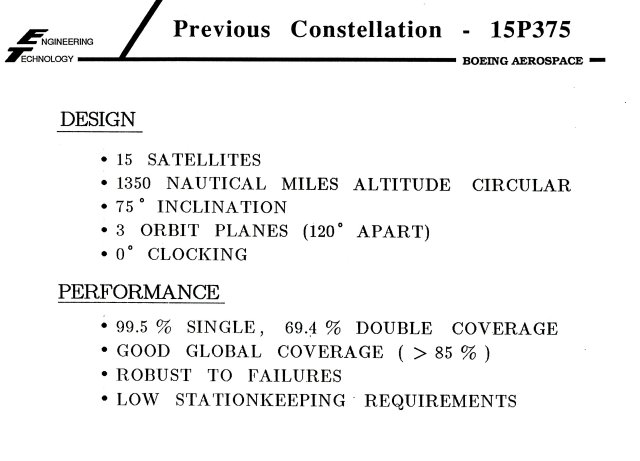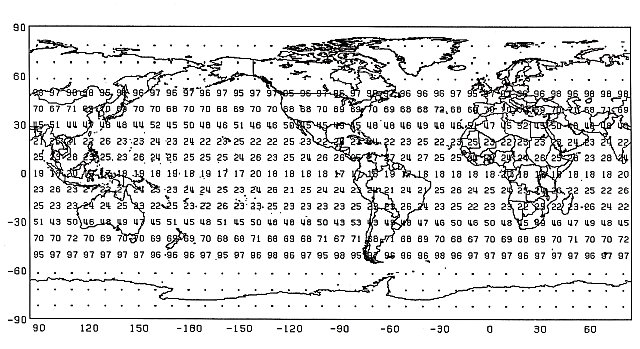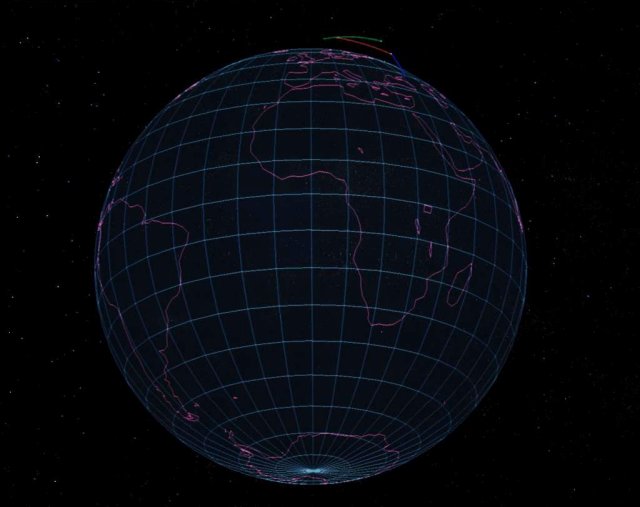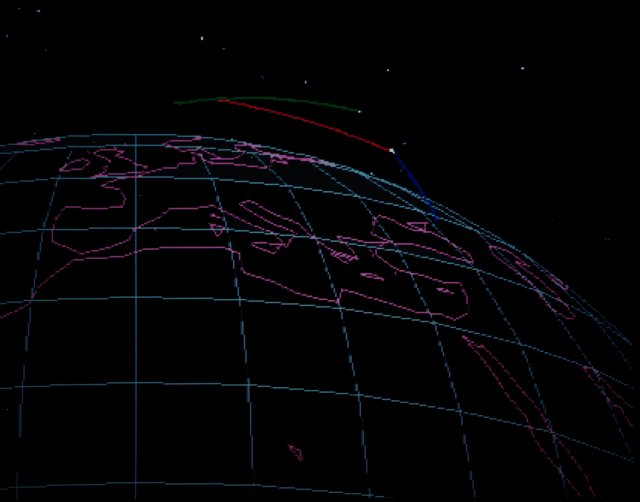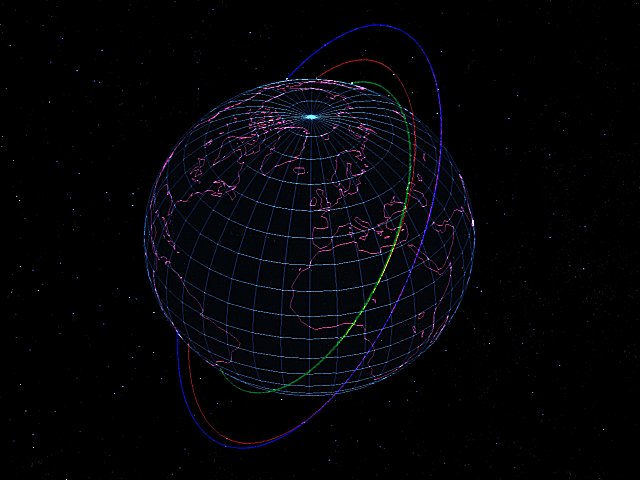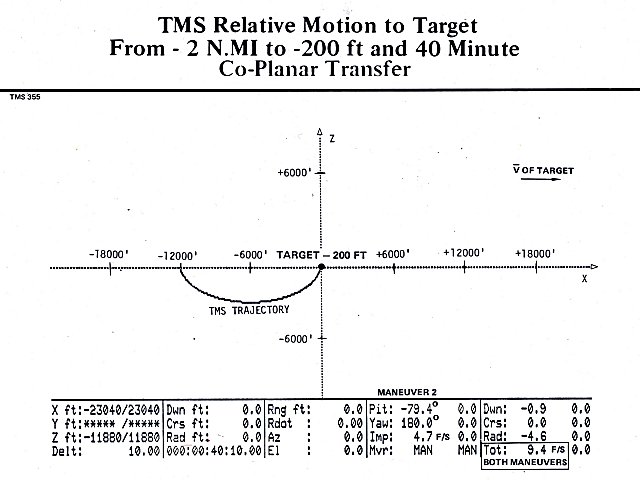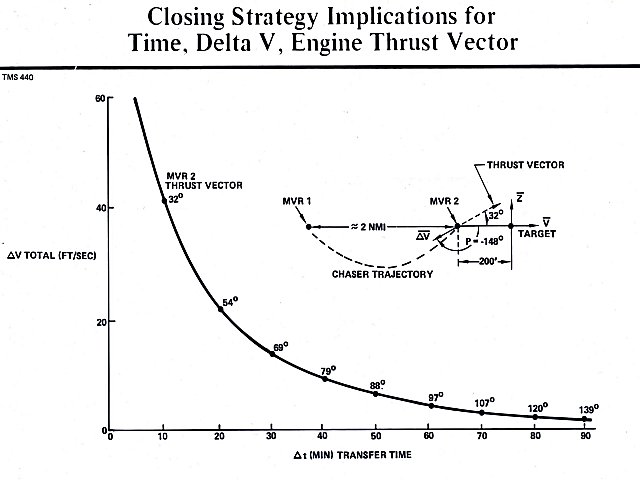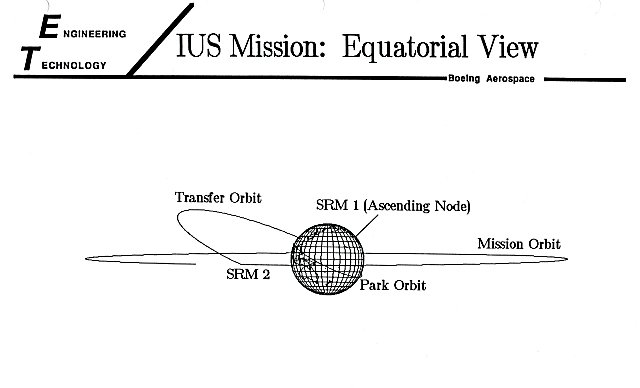Boeing Aerospace
In 1982 I started work for Boeing, specifically Boeing Aerospace in Kent, Washington. I hired into the Guidance and Navigation Technical Staff, which meant I was “farmed out” to whatever programs needed help. This often meant working in areas well outside my expertise, but I quickly learned how to apply my skills, or develop new ones, as needed to solve a wide variety of aerospace problems, ranging from cruise missile guidance, to space-based kinetic kill vehicles, to ground mobile launcher deployment optimization, to satellite constellation design, to lunar landing trade studies. My last four years at Boeing, I worked primarily in the IUS Guidance group, developing mission data loads and providing operations support during flight.
Here are a few samples of my work.
Constellation design: I worked on numerous programs that involved constellations of satellites for earth sensing, electronic countermeasures, and ballistic missile defense. I wrote the simulation and display tools to generate constellations varying the number of satellites, number of orbit planes, inclination of the planes, and “clocking” of the satellites between planes. My software would then generate earth visibility and satellite-to-satellite visibility data over time. This tool was used for to define requirements for the preliminary design phases of these programs.
Space-based kinetic energy weapons: I developed simulations and guidance algorithms for tracking and intercepting ballistic missiles during cruise phase. These images show a sample case. Unlike today’s “Powerpoint engineering,” this is actual simulation data driving a color RAMTEK display. I developed these tools over a decade before products like Satellite Tool Kit.
Rendezvous: I also worked on several programs, civilian and DoD, that required automated rendezvous. The primary one I can talk about was Orbital Maneuvering Vehicle (OMV). I was guidance/navigation lead on a 40 person proposal effort that was judged technically superior by NASA. OMV was to be a “space tug” that would fly from a pre-existing vehicle (space station or shuttle) and rendezvous and dock with a passive target vehicle. There, it would perform a variety of on-orbit servicing functions and then return to the departure vehicle. Thus, all the mission were actually dual rendezvous. Drawing on my experience as a rendezvous Flight Dynamics Officer at NASA, I designed and coded a rendezvous processor for performing preliminary design and trade studies. I also worked with a controls specialist to develop a high-fidelity, pilot-in-the-loop 6DOF simulator, since the OMV was to be tele-operated. Additionally, I wrote a 3DOF relative motion simulator, including Jacchia atmosphere model and oblate earth effects, to determine proximity operations performance and techniques. Here is some sample output:
IUS: I also spent four years on the Inertial Upper Stage (IUS) program, performing guidance analysis, mission data load development, and real-time mission operations support at the Satellite Control Facility (SCF) in Sunnyvale, California. I developed and implemented a novel approach to meeting my mission requirements that resulted in additional payload capability for my customer. I also won a cost-savings award for taking the initiative in developing a suite of tools to increase productivity and reduce cycle time in developing data loads. My supervisor also put me in charge of developing a series of training lectures for new personnel in the Guidance and Navigation technology staff.
Simulation Architecture: I designed and implemented an entire simulation architecture to support my wide variety of program support and simulation development. By creating this architecture, which I did entirely on my own initiative, I greatly reduced the response time in building tools to respond to a variety of engineering challenges.
Other programs: Often, I was assigned to programs far outside my training, yet I used my problem solving methods and computer software development skills to make significant contributions. For example, I was assigned to the Hard Mobile Launcher program, which needed preliminary analyses and trade studies of deployment strategies for the HML vehicles. I created a simulated terrain, placed HMLs and decoys in shelters at various locations, and using the vehicle performance requirements, simulated moving the HMLs in response to various Soviet attack strategies. The results were displayed real-time or faster on a Ramtek color display, in addition to the numeric data output. This helped the program manager assess various methodologies for hiding and deploying the HML.
I also worked on the Lunar Scout proposal, for an unmanned lunar lander. From scratch, I developed a lunar landing guidance methodology that I later learned was nearly identical to the Apollo lunar guidance developed at Draper Lab.
When I was assigned to the ALCM-C project, to develop an advanced Air Launch Cruise Missile, I obtained digital terrain elevation data (DTED) for eastern Europe and created a simulation to use as a testbed for various guidance and terrain following algorithms. I had never worked on an endo-atmospheric program before, but my work was deemed essential to the preliminary design of the vehicle.
My entire career at Boeing seemed to involve being thrown into unfamiliar situations, yet I was very successful at each of them, thanks to my creative approach to solving unfamiliar problems.
